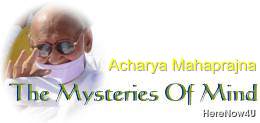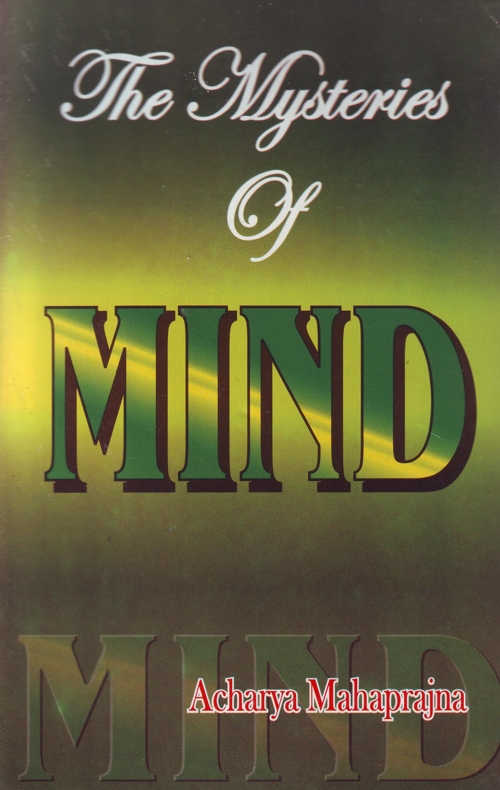
The practitioner who is engaged in attaining a state of samayika or equanimity has to remain very careful and wakeful. He says: "Sir, I have come to you. I am determined to imbibe the sense of equality. I am determined to relinquish all kinds of evil tendencies and conducts. I shall never do any wrong and undesirable deed by mind, speech and body. I shall not cause anybody to do such deeds, nor shall I justify such deeds if they are done by anybody else." This is a very healthy attitude of mind. But the practitioner will not be successful in carrying out his intention if he is secretly pursued and conditioned by the past. That is why he retraces his past actions. He criticizes himself for having done such deeds, which have separated him from his true self. He renounces his past personality, which has become estranged from the state of equanimity or samayika. He now experiences a new state of mind. His personality has become transformed. He aspires for a new birth and an enlightened existence. He has become awakened.
The unconscious interferes with our wishes and aspirations and renders them ineffective. We always think of improving the existing circumstances of our life and are unaware of the fact that the present is governed by the past. It is no use thinking of improving the present until we have got rid of the effects of past deeds, which put a check on the manifestation of our energies. We cannot avoid living in the present but we cannot live a wholesome life until the past has ceased to pursue-us. The only way to get rid of the burden of the past is to become a pure spectator of whatever happens to us. Unless such an attitude has been developed, the past will go on creating troubles for us. Suppressed desires will go on disturbing us when we try to meditate. Under their stress we are likely to lose hope and give up the practice of meditation. The practice of preksa meditation develops in us the attitude of a pure spectator, undisturbed by likes and dislikes, and predilections. It stops us from reacting to situations with an obsessed mind. It is essential for the practitioner to become an unbiased spectator rather than one who simply reacts to situations instinctively.
Kayotsarga and Preksa meditation are the two mediums of emptying the mind of all the adverse effects of past deeds.
When - the practitioner feels oppressed by the past, by suppressed desires, by unconscious tendencies, by greed, by cravings, etc. he should immediately begin kayotsarga. He should simply watch what is happening in his mind. He should in no way attempt to suppress his thinking process but on the other hand allow his thoughts to flow. But he should not indulge in them. That is the method of Preksa.
Acarya Hemacandra wrote a book entitled Yoga Sastra. It has twelve chapters. In the first eleven chapters he has discussed the traditional forms of meditation. In the last chapter he discusses some of his personal experiences. He has suggested that the practitioner should not try to suppress his thought processes. Suppressed thoughts, ideas and desires get embedded into the unconscious and produce dangerous consequences.
One may ask, "Shall we not suppress even evil thoughts?" The fact is that religious-minded people are not so much conscious of their own evil thoughts as they are of those of others. They are busy framing rules and regulations to save others from evil. It so appears that religion thrives on the regimentation of its followers. Regimentation is not the means of purifying the heart. It simply suppresses symptoms of disease. Naturopathy does not try to suppress the symptoms of disease; it tries to eradicate them. The Ayurvedic system of medicine also tries to do so. Modem medical practice tries to suppress disease instead of curing the patient of it. That which is suppressed will again emerge but not that which has been eradicated. One who tries to suppress the deluding effects of karma may enter into a passionless state of mind but as he has not eradicated the germs of deluding karma which lie embedded in the soul, they continue to exist and as soon as they get a favourable occasion, they will manifest themselves and will strike at the very roots of the passionless state of the mind.
Suppression is dangerous. Administrators believe in suppressing agitations but they forget that suppressed aspirations are dangerous. The practitioner should allow evil tendencies to pass through his mind. What he is to do is to avoid being involved in them. Evil thoughts, which enter into an uncommitted mind, will subside by themselves in the course of time. Until the mind has been emptied of them, they will go on creating trouble.
Pranayama (breath control) has three stages: recaka (emptying), puraka (collecting) and kumbhaka (retaining). Normally we simply inhale and exhale air. The soul is a perfect entity and does not take in anything. What is really needed is emptying. Unfortunately we do not know how to empty ourselves and that is why we remain uneasy.
Emptying the mind and soul is an essential condition of samayika. The practitioner should neither love good thoughts nor hate bad ones. Let thoughts come and go. Novices begin to lose patience when evil thoughts begin to enter into their minds. They are mistaken. They should rather think themselves to be fortunate. Evil thoughts which have manifested themselves in their minds have left their sanctuary and as there it nothing to support them in the conscious mind, they will die a natural death. Meditation means entering into the depths of one's being. When the meditator enters into his depths, he throws up all the evil, which had accumulated there earlier. Such experiences happen in the earlier stages of meditation. The practitioner should not be brightened by them.
There are two kinds of fever: ordinary fever and bone fever. The temperature of the body does not rise when one is suffering from bone fever. This fever is very dangerous because its symptoms are not visible. Thoughts and predilections are equally dangerous because they remain hidden. It is only when the practitioner tries to dig at their roots that they become active and manifest themselves.
The stage at which the practitioner is invaded by evil thoughts is a critical stage. There are two possibilities at this stage. Either he will fail or raise himself to a higher level. He has to be fully wakeful and try to control himself.
One who engages himself in samayika knows it very well that it is difficult to do away with the past. It will manifest itself in one form or the other. The practitioner should not feel nervous. He should know that he is engaged in getting rid of his existing personality, which is the product of his past experiences, and in transforming it into a new personality, which will be the creation of his present self-exertion. He needs new raw material with which to construct his new personality.
 Acharya Mahaprajna
Acharya Mahaprajna

